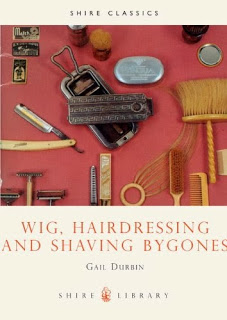Reviewed by Gayle MacGregor – Sideshow Alley
This small but informative book covers a topic not often explored: The history of wigs, hairdressing and men’s shaving accoutrements.
Starting from 1624 the author explores the reasons why wigs became fashionable from their practical beginnings to becoming the fashion of the court, the clergy and of upwardly mobile society. Early construction techniques of wigs and the subsequent advancement of these techniques and the tools of the trade are discussed.
The fashion for powdering and the reasons for this trend are explored along with accompanying black and white photographs of examples of equipment.
The impact on the fashion for wigs caused by government powder taxes imposed in 1795 to assist in funding the revolutionary wars against France is particularly well covered.
A brief history of hairpieces and false hair includes the influence of American technological advancements in the hair and hairpiece trade, and further industry developments into the 1960s.
The shaving chapter is particularly detailed covering barber shops, the history of razors, and sharpening equipment.
The history of hairdressing includes hair dyeing and the often toxic compounds used, pomades along with dressings, brushes, and combs. The development of the Hairdressing Salon along with the invention of curlers, permanent waving and hair dryers are also explored.
The text is supported by black and white portraits, accompanied with photographs including those of extant objects.
This fascinating book will be of particular interest to students of hairdressing, along with costume designers and properties departments for theatre and film.
